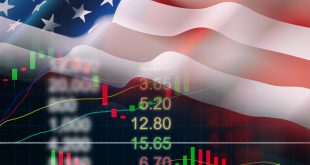Switzerland is racing against time to counter steep U.S. tariffs set to hit its exports with a hefty 39% duty, one of the highest globally, starting Thursday, August 7, 2025. The Alpine nation, stunned by President Donald Trump’s announcement, convened an emergency meeting on Monday to craft a “more attractive” offer aimed at softening the economic blow and safeguarding jobs and growth. The proposed tariffs, a sharp escalation from an earlier 31% threat in April, have heightened tensions as Switzerland scrambles to protect its vital trade relationship with the U.S.
The Swiss stock market plummeted over 2% at Monday’s opening, reeling from the tariff news announced during Friday’s national holiday closure. Though losses later moderated, anxiety persists, as the U.S. accounts for a sixth of Swiss exports, including pharmaceuticals, luxury watches, and chocolate. The Swiss government highlighted a $50 billion trade surplus with the U.S. as a key point of contention for Trump, proposing measures like increased imports of American liquefied natural gas or additional Swiss corporate investments in the U.S. to ease tensions.
Swiss President Karin Keller-Sutter expressed disappointment, noting that prior negotiations had been “constructive” but failed to yield an agreement. The government vowed to persist in talks beyond the Thursday deadline, focusing on a new proposal addressing U.S. concerns. However, U.S. Trade Representative Jamieson Greer cautioned that tariff rates are “pretty much set,” signaling limited room for immediate concessions. This hardline stance places Switzerland at a disadvantage compared to the EU, which secured a lower 15% tariff rate.
Key industries like watches and chocolate face severe risks, with the Swiss chocolate association, Chocosuisse, calling the tariffs a “harsh blow” atop an existing 10% duty. Analysts warn that if the pharmaceutical sector, currently exempt, is targeted, the economic impact could shave up to 0.7% off Switzerland’s GDP. Yet, some Swiss investment analysts remain cautiously optimistic, suggesting a deal could align Switzerland’s tariffs with the EU’s 15%, sparing key sectors from significant profit erosion.
With the deadline looming, Switzerland is in a high-stakes push to shield its export-driven economy. The trade tensions with the U.S., coupled with uncertainty over Trump’s demands, place the Alpine nation in a precarious position. Will Switzerland’s new offer defuse the tariff threat, or will the 39% duties reshape its trade landscape? The outcome could redefine Swiss economic stability and its transatlantic ties.

 Noor Trends News, Technical Analysis, Educational Tools and Recommendations
Noor Trends News, Technical Analysis, Educational Tools and Recommendations




